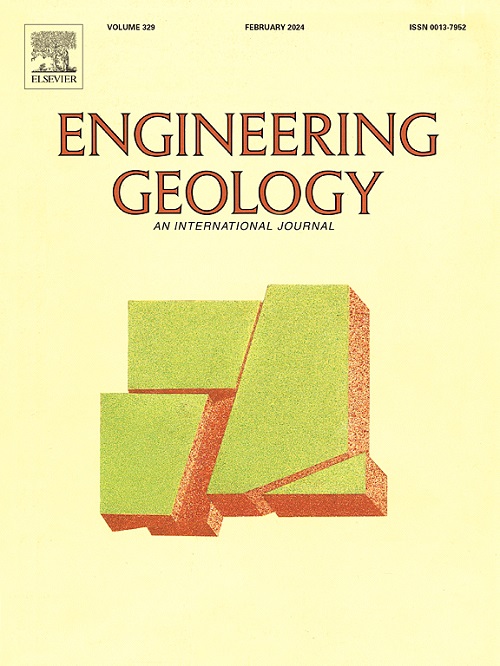A rapid unsaturated infiltration prediction method for slope stability analysis considering uncertainties: Deep operator networks
IF 6.9
1区 工程技术
Q1 ENGINEERING, GEOLOGICAL
引用次数: 0
Abstract
Slope stability analysis is closely related to the quantification of uncertainties in unsaturated infiltration behavior. These uncertainties arise from both internal factors, such as spatial variability in soil physical properties, and external factors, like stochastic variability in rainfall intensity. Although random-field numerical methods provide a reliable way to quantify such uncertainties, their substantial computational demands present an obvious drawback. To address this limitation, we develop a novel data-driven surrogate model using deep operator networks (DeepONet), and construct a direct mapping between the uncertain factors and their induced responses in unsaturated-slope infiltration fields. Unlike conventional deep neural networks that approximate relationships between variables, DeepONet primarily focuses on approximating relationships between functions, learning operator mappings between them (uncertain factors and their responses in slope stability). Three unsaturated infiltration scenarios under uncertain conditions are given to evaluate the performance of DeepONet. The results demonstrate the effectiveness of applying DeepONet for rapid and accurate prediction of unsaturated infiltration behavior in slopes. DeepONet exhibits an advantage in computational speed for uncertain slope stability problems, outperforming traditional numerical solvers by several orders of magnitude without requiring additional repeat training.
求助全文
约1分钟内获得全文
求助全文
来源期刊

Engineering Geology
地学-地球科学综合
CiteScore
13.70
自引率
12.20%
发文量
327
审稿时长
5.6 months
期刊介绍:
Engineering Geology, an international interdisciplinary journal, serves as a bridge between earth sciences and engineering, focusing on geological and geotechnical engineering. It welcomes studies with relevance to engineering, environmental concerns, and safety, catering to engineering geologists with backgrounds in geology or civil/mining engineering. Topics include applied geomorphology, structural geology, geophysics, geochemistry, environmental geology, hydrogeology, land use planning, natural hazards, remote sensing, soil and rock mechanics, and applied geotechnical engineering. The journal provides a platform for research at the intersection of geology and engineering disciplines.
 求助内容:
求助内容: 应助结果提醒方式:
应助结果提醒方式:


